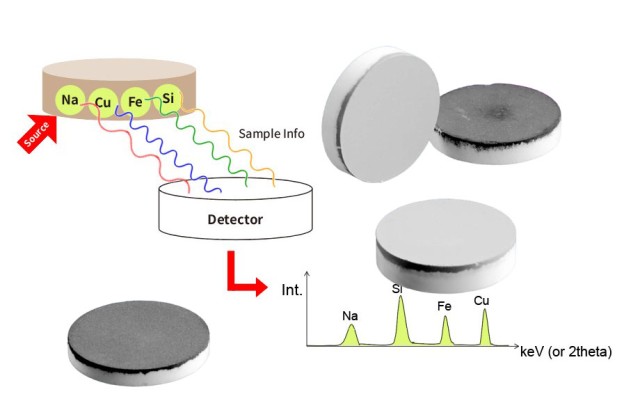Inhaltsübersicht
- Einführung in die XRF-Probenvorbereitung
- Partikelgröße: Die Grundlage einer erfolgreichen Pelletvorbereitung
- Verunreinigung: Der stille Saboteur in der XRF-Analyse
- Wahl des Bindemittels: Der Schlüssel zu homogenen Pellets
- Pellet-Dicke: Sicherstellung einer ausreichenden Probentiefe
- Druckanwendung: Gleichgewicht zwischen Kompression und Homogenität
- Verdünnungsverhältnis: Feinabstimmung für genaue Ergebnisse
- Kreuzkontamination von Probe zu Probe: Verhinderung von Interferenzen
- Bewährte Praktiken zur Fehlerreduzierung bei der XRF-Pelletvorbereitung
- Schlussfolgerung: Erreichen von Präzision in der RFA-Analyse
Einführung in die XRF-Probenvorbereitung
Im Bereich der Röntgenfluoreszenzanalyse (RFA) ist die Präzision der Probenvorbereitung von entscheidender Bedeutung, um genaue und zuverlässige Ergebnisse zu erhalten. Das Pressen von Pellets spielt in diesem Prozess eine entscheidende Rolle, da es sicherstellt, dass die Proben homogenisiert und für die Analyse bereit sind. Allerdings können häufige Probleme wie eine falsche Partikelgröße, Verunreinigungen, die falsche Wahl des Bindemittels und eine unzureichende Druckanwendung zu erheblichen Fehlern führen. Dieser Artikel befasst sich mit den häufigsten Fallstricken bei der XRF-Probenvorbereitung mit der PELLET-PRESS und bietet praktische Lösungen für deren Überwindung, damit Sie letztendlich ein Höchstmaß an Präzision bei Ihrer XRF-Analyse erreichen.
Partikelgröße: Die Grundlage einer erfolgreichen Pelletvorbereitung
Die Partikelgröße ist ein entscheidender Faktor bei der Vorbereitung von gepressten Pellets, der sich erheblich auf die Genauigkeit und Zuverlässigkeit der Analyseergebnisse auswirkt. Das Erreichen der idealen Partikelgröße, die in der Regel weniger als 50 µm beträgt, ist aus mehreren Gründen wichtig. Erstens gewährleisten kleinere Partikelgrößen eine bessere Homogenität innerhalb der Probe. Sind die Partikel zu groß oder variieren sie in ihrer Größe, kann dies zu Unstimmigkeiten in der Verteilung der Elemente innerhalb des Pellets führen, was wiederum zu verzerrten Analysedaten führen kann.
Die Bedeutung einer gleichmäßigen Partikelgröße
Eine einheitliche Partikelgröße ist aus mehreren Gründen von entscheidender Bedeutung. Kleinere Partikel ermöglichen eine effizientere Verdichtung und Bindung, wenn das Pellet gepresst wird. Diese Einheitlichkeit stellt sicher, dass die Probe gleichmäßig komprimiert wird, was zu einem konsistenten und zuverlässigen Analyseergebnis führt. Im Gegensatz dazu können größere oder variable Partikelgrößen zu Heterogenitäten innerhalb des Pellets führen, wobei verschiedene Regionen des Pellets unterschiedliche Elementkonzentrationen enthalten können. Diese Heterogenität kann zu fehlerhaften Messwerten führen, da das Analysegerät möglicherweise nicht das gesamte Pellet gleichmäßig beprobt.
Erreichen der idealen Partikelgröße
Um die ideale Partikelgröße von weniger als 50 µm zu erreichen, können verschiedene Labortechniken eingesetzt werden. Zu den gängigen Methoden gehört die Verwendung von Brechern, Mühlen und Zerkleinerungsmaschinen, um die Partikelgröße der Probe vor dem Pressen zu reduzieren. Im Allgemeinen wird ein Partikeldurchmesser von 40 µm oder weniger als akzeptabel angesehen. Durch diese Techniken wird sichergestellt, dass die Probe fein gemahlen wird, was zu einer besseren Einheitlichkeit und Konsistenz des endgültigen Pellets führt.
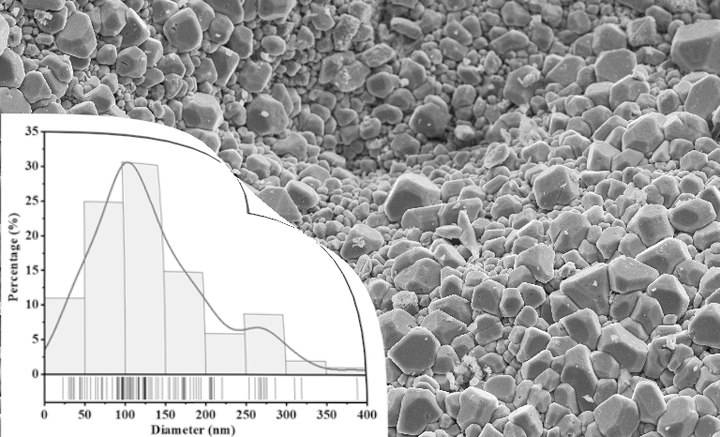
Auswirkung der Partikelgröße auf die analytischen Ergebnisse
Der Einfluss der Partikelgröße auf die Analyseergebnisse kann nicht hoch genug eingeschätzt werden. Kleinere Partikelgrößen sind entscheidend für die Herstellung von Pellets, die die besten Analyseergebnisse liefern. Bei der Röntgenfluoreszenzanalyse (RFA) beispielsweise ist die Probenahmetiefe oder kritische Austrittshöhe für Elemente in einer Probe energieabhängig. Elemente mit längeren Wellenlängen wie Natrium (Na) haben eine geringere Entweichungstiefe als Elemente mit kürzeren Wellenlängen wie Eisen (Fe). Das bedeutet, dass bei der Na-Analyse nur die ersten 10µm einer Probe untersucht werden. Daher kann jede Heterogenität innerhalb dieser geringen Tiefe die Genauigkeit der Analyse erheblich beeinträchtigen.
Im Gegensatz dazu können größere oder variable Partikelgrößen zu Heterogenitäten in der Probe führen. Diese Heterogenitäten können zu einer inkonsistenten Elementverteilung innerhalb des Pellets führen, was wiederum unzuverlässige Analysedaten zur Folge hat. Enthält ein Pellet beispielsweise Bereiche mit unterschiedlichen Partikelgrößen, kann es sein, dass das Analysegerät diese Bereiche nicht gleichmäßig beprobt, was zu Diskrepanzen bei den gemessenen Elementkonzentrationen führt.
Bewährte Praktiken für die Partikelgrößenkontrolle
Um die bestmöglichen Analyseergebnisse zu erzielen, ist es wichtig, bewährte Verfahren zur Kontrolle der Partikelgröße anzuwenden. Dazu gehört die Anwendung geeigneter Schleif- und Mahltechniken, um eine einheitliche Partikelgröße von weniger als 50 µm zu erreichen. Die Aufmerksamkeit für Details und die Konsistenz des Aufbereitungsprozesses sind ebenfalls entscheidend. Indem sichergestellt wird, dass die Probe auf die ideale Partikelgröße gemahlen wird, können die Analytiker das Risiko von Heterogenitäten minimieren und genauere und zuverlässigere Analyseergebnisse erzielen.
Zusammenfassend lässt sich sagen, dass die Partikelgröße die Grundlage für eine erfolgreiche Pelletaufbereitung ist. Das Erreichen und Beibehalten einer einheitlichen Partikelgröße von weniger als 50 µm ist entscheidend für die Homogenität der Probe, was wiederum zu genaueren und zuverlässigeren Analyseergebnissen führt. Durch die Einhaltung bewährter Verfahren und die sorgfältige Beachtung des Vorbereitungsprozesses können Analytiker die Qualität ihrer Analysedaten erheblich verbessern.
Verunreinigung: Der stille Saboteur in der XRF-Analyse
Verunreinigungen sind eine der größten Herausforderungen bei der Röntgenfluoreszenzanalyse (RFA), insbesondere während der Probenvorbereitung. Die Schleifphase ist ein kritischer Punkt, an dem es leicht zu Verunreinigungen kommen kann, die zu ungenauen und irreführenden Ergebnissen führen. Um die Integrität der RFA-Analyse zu erhalten, ist es wichtig, die Quellen der Verunreinigung zu verstehen, wirksame Präventionsmethoden zu implementieren und die Folgen der Verunreinigung zu erkennen.
Quellen der Verunreinigung
Verunreinigungen in der RFA-Analyse können aus verschiedenen Quellen stammen, aber der Schleifprozess ist besonders anfällig. Beim Schleifen können externe Komponenten aus dem Probenvorbereitungsgerät versehentlich in die Probe gelangen. Dies kann passieren, wenn die Schleifwerkzeuge oder Behälter zwischen den Proben nicht ordnungsgemäß gereinigt werden, was zu einer Kreuzkontamination führt. So können beispielsweise Rückstände von früheren Proben auf den Mahlwerkzeugen verbleiben und auf die neue Probe übertragen werden, wodurch sich deren elementare Zusammensetzung verändert.
Eine weitere häufige Kontaminationsquelle ist die Verwendung von ungeeigneten Materialien für die Probenvorbereitung. Wenn beispielsweise die Mahlwerkzeuge aus Materialien bestehen, die Partikel abwerfen können, oder wenn die Behälter nicht inert sind, können diese Materialien unerwünschte Elemente in die Probe einbringen. Außerdem können Umgebungsfaktoren wie Staub, Feuchtigkeit und chemische Dämpfe im Labor zu einer Kontamination beitragen.
Methoden zur Vermeidung von Verunreinigungen
Die Vermeidung von Verunreinigungen bei der RFA-Analyse erfordert akribische Aufmerksamkeit für Details und die Anwendung strenger Protokolle. Eine der wirksamsten Methoden besteht darin, sicherzustellen, dass alle Schleifwerkzeuge und Behälter vor jedem Gebrauch gründlich gereinigt und sterilisiert werden. Dazu können Lösungsmittel oder spezielle Reinigungsmittel verwendet werden, die mit den zu analysierenden Materialien verträglich sind.
Eine andere Strategie ist die Verwendung inerter Materialien für Mahlwerkzeuge und Behälter. Bei Materialien wie Borsilikatglas oder hochreinem Aluminiumoxid ist die Wahrscheinlichkeit, dass Verunreinigungen in die Probe gelangen, geringer. Außerdem ist es wichtig, in einer sauberen Umgebung zu arbeiten, vorzugsweise in einem speziellen Probenvorbereitungsbereich, der frei von Staub und anderen potenziellen Verunreinigungen ist.
Bei Pulverproben ist es wichtig, Küvetten und Filme sorgfältig vorzubereiten. Es gibt viele Arten von Filmen für die RFA, und die Auswahl des am besten geeigneten Typs für eine bestimmte Aufgabe und ein bestimmtes Gerät ist entscheidend. Durch Rücksprache mit dem Lieferanten kann sichergestellt werden, dass der gewählte Film für die Probe geeignet ist und keine Verunreinigungen einbringt.

Auswirkungen von Verunreinigungen auf RFA-Ergebnisse
Verunreinigungen können schwerwiegende Folgen für die RFA-Ergebnisse haben und zu ungenauen und unzuverlässigen Daten führen. Wenn eine Probe während des Mahlvorgangs verunreinigt wird, ist die vom RFA-Gerät gemessene Elementzusammensetzung falsch. Dies kann zu falsch positiven oder negativen Ergebnissen, zur Fehlinterpretation der Daten und letztlich zu falschen Schlussfolgerungen führen.
Wenn zum Beispiel eine Probe, die auf ihren Bleigehalt untersucht werden soll, mit Kalzium aus einer früheren Probe verunreinigt ist, können die RFA-Ergebnisse eine künstlich hohe Bleikonzentration anzeigen. Dies könnte zu einer Fehldiagnose der Bleikontamination führen, was sich möglicherweise auf die Einhaltung von Vorschriften und die öffentliche Gesundheit auswirkt.
Darüber hinaus kann eine Verunreinigung auch die Präzision und Reproduzierbarkeit von RFA-Messungen beeinträchtigen. Wenn bei der Vorbereitung mehrerer Proben eine Kontamination auftritt, kann die Variabilität der Ergebnisse zunehmen, was den Vergleich von Daten zwischen verschiedenen Proben erschwert. Dies kann die Zuverlässigkeit der Analyse untergraben und die Gültigkeit der aus den Daten gezogenen Schlussfolgerungen beeinträchtigen.
Schlussfolgerung
Verunreinigungen sind ein stiller Saboteur in der RFA-Analyse, insbesondere während des Schleifprozesses. Um die Genauigkeit und Zuverlässigkeit von RFA-Ergebnissen zu erhalten, ist es entscheidend, die Quellen von Verunreinigungen zu kennen, wirksame Präventionsmethoden anzuwenden und die Folgen von Verunreinigungen zu erkennen. Durch eine sorgfältige Probenvorbereitung, die Verwendung geeigneter Materialien und die Arbeit in einer sauberen Umgebung können Forscher das Kontaminationsrisiko minimieren und die Integrität ihrer RFA-Analyse sicherstellen.
Wahl des Bindemittels: Der Schlüssel zu homogenen Pellets
Die Auswahl eines geeigneten Bindemittels ist ein entscheidender Aspekt der Pelletvorbereitung, da sie sich direkt auf die Homogenität und Stabilität des fertigen Pellets auswirkt. Bindemittel dienen als "Klebstoff", der die Probenpartikel zusammenhält und dafür sorgt, dass das Pellet während der Analyse intakt bleibt und das Spektrometer nicht durch loses Pulver verunreinigt wird. Die bei der Pelletvorbereitung am häufigsten verwendeten Bindemittel sind Zellulose/Wachs-Gemische, die dafür bekannt sind, dass sie sich mit der Probe homogenisieren und die Partikel während des Pressvorgangs effektiv zusammenhalten.
Rolle der Bindemittel bei der Pelletaufbereitung
Bindemittel spielen eine entscheidende Rolle im Pelletierungsprozess, da sie die Bildung eines kohäsiven Pellets aus einer Pulverprobe erleichtern. Ohne ein Bindemittel würden die Probenpartikel nicht aneinander haften, was zu einem losen und instabilen Pellet führen würde, das leicht auseinanderbrechen oder das Spektrometer verunreinigen könnte. Das Bindemittel fungiert als Medium, das die Partikel aneinander haften lässt, so dass ein festes und einheitliches Pellet entsteht, das ohne Störungen durch lose Partikel analysiert werden kann.
Gängige Arten von Bindemitteln
Cellulose/Wachs-Gemische
Cellulose/Wachs-Gemische sind aufgrund ihrer Wirksamkeit und einfachen Anwendung die am häufigsten verwendeten Bindemittel bei der Pelletaufbereitung. Diese Bindemittel werden der Probe in der Regel in Anteilen von 20-30 % zugesetzt, je nach den spezifischen Anforderungen der Analyse. Die Zellulosekomponente verleiht dem Pellet strukturelle Integrität, während das Wachs dafür sorgt, dass die Partikel aneinander haften. Diese Kombination ermöglicht die Bildung eines homogenen Pellets, das sowohl fest als auch stabil ist.
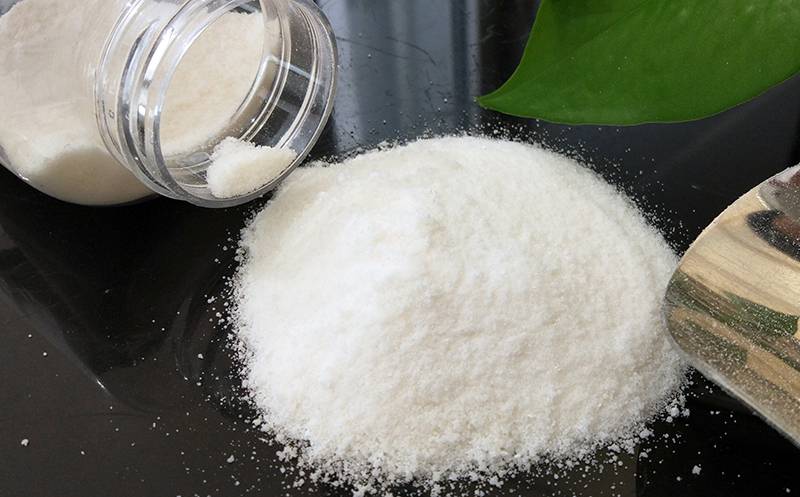
Acrylat-Bindemittel
In einigen Fällen können Acrylbindemittel als Alternative zu Zellulose/Wachs-Gemischen verwendet werden. Acrylbindemittel sind jedoch schwieriger mit der Probe zu homogenisieren, da sie oft manuell gemischt werden müssen und nicht automatisch beim Mahlen zugegeben werden. Dies kann zu Unregelmäßigkeiten im fertigen Pellet führen, da sich das Bindemittel möglicherweise nicht gleichmäßig in der Probe verteilt.
Vorgemischte Pellets
Einige Bindemittel sind als vorgemischte Pellets erhältlich, die der Mühle während des Mahlens automatisch zugegeben werden können. Diese vorgemischten Pellets stellen sicher, dass das Bindemittel gleichmäßig in der Probe verteilt wird, was zu konsistenteren und zuverlässigeren Ergebnissen führt. Die Wahl des vorgemischten Pellets sollte jedoch sorgfältig abgewogen werden, um sicherzustellen, dass es mit der spezifischen zu analysierenden Probe kompatibel ist.
Auswahl des am besten geeigneten Bindemittels
Die Auswahl des am besten geeigneten Bindemittels für eine bestimmte Probe hängt von mehreren Faktoren ab, darunter die Art der Probe, die gewünschte Pelletstärke und die spezifischen Anforderungen der Analyse. Im Folgenden sind einige wichtige Überlegungen aufgeführt, die bei der Auswahl eines Bindemittels zu beachten sind:
Art der Probe
Verschiedene Proben können unterschiedliche Arten von Bindemitteln erfordern. So können beispielsweise Proben, die schwer zu mahlen sind oder schwer mahlbare Phasen enthalten, von einem Bindemittel profitieren, das sich besser mit der Probe homogenisieren und die Partikel zusammenhalten kann. In solchen Fällen kann eine Zellulose/Wachs-Mischung wirksamer sein als ein Acrylbindemittel.
Festigkeit des Pellets
Die Festigkeit des fertigen Pellets ist ein weiterer wichtiger Aspekt. Ein festeres Pellet bricht bei der Handhabung oder Analyse weniger leicht auseinander, wodurch das Risiko einer Kontamination verringert und die Genauigkeit der Ergebnisse verbessert wird. Cellulose/Wachs-Mischungen werden im Allgemeinen bevorzugt, da sie starke und stabile Pellets ergeben.
Anforderungen an die Analyse
Die spezifischen Anforderungen der Analyse, wie z. B. die Art des verwendeten Spektrometers oder die Empfindlichkeit der Messung, können ebenfalls die Wahl des Bindemittels beeinflussen. Einige Bindemittel erzeugen beispielsweise ein gleichmäßigeres Pellet, das sich besser für hochauflösende Analysen eignet, während andere eine Kontamination besser verhindern.
Bewährte Praktiken für die Auswahl von Bindemitteln
Um die bestmöglichen Ergebnisse zu erzielen, ist es wichtig, bei der Auswahl und Verwendung eines Bindemittels die besten Verfahren zu befolgen. Hier sind einige Tipps, die Ihnen helfen, das Beste aus Ihrem Bindemittel herauszuholen:
Testen Sie mehrere Bindemittel
Testen Sie nach Möglichkeit mehrere Bindemittel mit Ihrer Probe, um festzustellen, welches Bindemittel die beständigsten und zuverlässigsten Ergebnisse liefert. Dies kann Ihnen helfen, das optimale Bindemittel für Ihre spezielle Anwendung zu finden.
Achten Sie auf die Proportionen
Das Verhältnis von Bindemittel zu Probe ist entscheidend für ein homogenes Pellet. Wird zu viel Bindemittel zugegeben, kann das Pellet zu hart und spröde werden, während eine zu geringe Zugabe zu einem schwachen und instabilen Pellet führen kann. In der Regel wird ein Verhältnis von 20-30 % Bindemittel zur Probe empfohlen, doch kann dies je nach Bindemittel und Probe variieren.
Für eine gleichmäßige Verteilung sorgen
Unabhängig von der Art des verwendeten Bindemittels ist es wichtig, dass das Bindemittel gleichmäßig in der Probe verteilt wird. Dies kann durch sorgfältiges Mischen des Bindemittels mit der Probe oder durch Verwendung eines vorgemischten Pellets erreicht werden. Eine ungleichmäßige Verteilung des Bindemittels kann zu Unregelmäßigkeiten im endgültigen Pellet führen und die Genauigkeit der Analyse beeinträchtigen.
Partikelgröße überwachen
Auch die Partikelgröße der Probe kann die Wirksamkeit des Bindemittels beeinflussen. Größere Partikel können zu einem weniger homogenen Pellet führen, da das Bindemittel möglicherweise nicht in der Lage ist, alle Partikel wirksam zusammenzuhalten. Das Zerkleinern der Probe auf eine einheitliche Partikelgröße kann dazu beitragen, die Leistung des Bindemittels zu verbessern und ein einheitlicheres Pellet zu erzeugen.
Fazit
Die Wahl des Bindemittels ist ein entscheidender Faktor für die Herstellung homogener und stabiler Pellets für die Analyse. Durch die Auswahl des für Ihre Probe am besten geeigneten Bindemittels und die Beachtung bewährter Verfahren für dessen Verwendung können Sie sicherstellen, dass Ihre Pellets konsistent, zuverlässig und frei von Verunreinigungen sind. Unabhängig davon, ob Sie sich für eine Zellulose/Wachs-Mischung, ein Acrylbindemittel oder ein vorgemischtes Pellet entscheiden, können Sie durch sorgfältige Berücksichtigung der oben genannten Faktoren die bestmöglichen Analyseergebnisse erzielen.
Pellet-Dicke: Sicherstellung einer ausreichenden Probentiefe
Bei der Röntgenfluoreszenzanalyse (RFA) ist die Dicke des gepressten Pellets ein entscheidender Faktor, der die Genauigkeit und Zuverlässigkeit der Analyseergebnisse direkt beeinflusst. Das Pellet muss ausreichend dick sein, damit die in der Probe erzeugte Röntgenstrahlung entweichen kann, ohne wieder absorbiert zu werden, und eine präzise Messung der vorhandenen Elemente möglich ist. Dieser Abschnitt befasst sich mit der Bedeutung der Pelletdicke, mit der Berechnung der erforderlichen Dicke und mit häufigen Fehlern, die zu ungenauen Ergebnissen führen können.
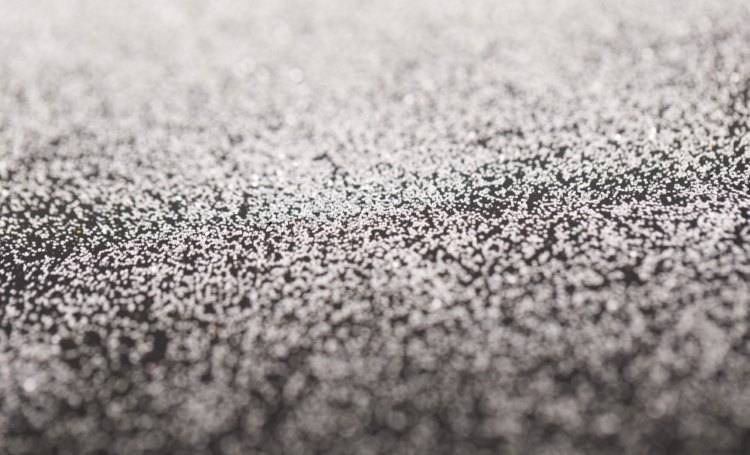
Die Bedeutung der Pelletdicke
Bei der Vorbereitung gepresster Pellets für die RFA-Analyse kommt es in erster Linie darauf an, dass das Pellet für den Röntgenstrahl für alle zu messenden Elemente "unendlich dick" ist. Das bedeutet, dass die Dicke des Presslings die Austrittstiefe des energiereichsten Elements in der Probe überschreiten sollte. Ist das Pellet zu dünn, kann die in der Probe erzeugte Röntgenstrahlung reabsorbiert werden, bevor sie den Detektor erreichen kann, was zu einer Unterschätzung der Elementkonzentration führt.
Die Fluchttiefe eines Elements hängt von seinem Energieniveau ab, wobei Elemente mit höherer Energie in der Regel eine größere Fluchttiefe aufweisen. So haben Elemente mit höheren Ordnungszahlen (z. B. Eisen, Kupfer) eine größere Entweichungstiefe als Elemente mit niedrigerer Energie (z. B. Natrium, Magnesium). Daher muss das Pellet dick genug sein, um die größte Entweichungstiefe der interessierenden Elemente aufnehmen zu können.
Berechnung der erforderlichen Pelletdicke
Um die erforderliche Pelletdicke zu bestimmen, muss die Entweichungstiefe des Elements mit der höchsten Energie in der Probe berücksichtigt werden. Die Entweichungstiefe kann anhand der Massenabsorptionskoeffizienten der in der Probe vorhandenen Elemente berechnet werden. Der Massenabsorptionskoeffizient ist ein Maß dafür, wie stark ein Material Röntgenstrahlen absorbieren kann, und hängt von der Ordnungszahl des Elements und der Energie der Röntgenstrahlen ab.
Für praktische Zwecke ist ein Pellet mit 8-10 Gramm Probe für ein Pellet mit 32 mm Durchmesser oder 13-15 Gramm Probe für ein Pellet mit 40 mm Durchmesser im Allgemeinen ausreichend für die Elemente, die selbst mit den leistungsstärksten derzeit verfügbaren wellenlängendispersiven Röntgenfluoreszenzgeräten (WDRFA) gemessen werden können. Diese Gewichte stellen sicher, dass das Pellet ausreichend dick ist, um die Reabsorption von Röntgenstrahlen zu verhindern und genaue Analyseergebnisse zu liefern.
Häufige Fehler bei der Pelletdicke
Einer der häufigsten Fehler bei der Herstellung gepresster Pellets ist die Unterschätzung der erforderlichen Dicke. Dies kann vorkommen, wenn das Pellet nicht dick genug ist, um die tiefste Austrittstiefe der zu messenden Elemente aufzunehmen. Infolgedessen kann die in der Probe erzeugte Röntgenstrahlung wieder absorbiert werden, was zu ungenauen Messungen führt.
Ein weiterer häufiger Fehler ist die Nichtberücksichtigung der durchschnittlichen Atommasse der Probe. Das Absorptionsvermögen der Probe ist direkt proportional zu ihrer durchschnittlichen Atommasse, was bedeutet, dass schwerere Elemente mehr Röntgenstrahlen absorbieren als leichtere Elemente. Daher ist es von entscheidender Bedeutung, die durchschnittliche Elementzusammensetzung der Probe bei der Bestimmung der erforderlichen Pelletdicke zu berücksichtigen.
Überlegungen zur Kontamination
Neben der Pelletdicke ist die Kontamination ein weiterer kritischer Faktor, der die Qualität der RFA-Analyse beeinträchtigen kann. Verunreinigungen können während des Zerkleinerungsprozesses der Probe auftreten und vom Probenvorbereitungsgerät oder von einer Kreuzkontamination von Probe zu Probe herrühren. Um die Kontamination zu minimieren, ist es wichtig, saubere Geräte zu verwenden und sicherzustellen, dass der Probenvorbereitungsprozess in einer kontrollierten Umgebung durchgeführt wird.
Best Practices für die Pelletvorbereitung
Um eine genaue und zuverlässige RFA-Analyse zu gewährleisten, ist es wichtig, die besten Verfahren für die Pelletvorbereitung zu befolgen. Dazu gehören die Verwendung einer angemessenen Probenmenge, um die erforderliche Pelletdicke zu erreichen, die Auswahl des richtigen Bindemittels und die Anwendung eines gleichmäßigen Drucks während des Pressvorgangs. Detailgenauigkeit und Konsistenz im Vorbereitungsprozess sind der Schlüssel zur Minimierung von Fehlern und zur Erzielung qualitativ hochwertiger Analyseergebnisse.
Zusammenfassend lässt sich sagen, dass die Dicke des gepressten Pellets ein kritischer Faktor bei der RFA-Analyse ist, der sich direkt auf die Genauigkeit und Zuverlässigkeit der Analyseergebnisse auswirkt. Indem man sicherstellt, dass das Pellet ausreichend dick ist, um die größte Austrittstiefe der zu messenden Elemente aufzunehmen, und indem man bewährte Verfahren für die Pelletvorbereitung befolgt, können Analytiker präzise und genaue Messungen der in der Probe vorhandenen Elemente erhalten.
Druckanwendung: Gleichgewicht zwischen Kompression und Homogenität
Das Erreichen eines optimalen Drucks beim Pressen der Pellets ist entscheidend für die Herstellung hochwertiger Pellets, die frei von Hohlräumen sind und gleichbleibende Eigenschaften aufweisen. Der Prozess beinhaltet die Anwendung des richtigen Drucks, um die Probe zu komprimieren und das Bindemittel zu rekristallisieren, um sicherzustellen, dass das Endprodukt sowohl dicht als auch homogen ist. Dieser Abschnitt befasst sich mit den kritischen Aspekten der Druckanwendung, einschließlich der Auswirkungen von Über- und Unterdruck, sowie mit Techniken zum Erreichen des optimalen Drucks für Ihre Proben.
Bedeutung der korrekten Druckanwendung
Das Hauptziel des Pelletpressens besteht darin, Hohlräume innerhalb des Pellets zu beseitigen, die die Intensität der leichteren Elemente in Ihrer Probe erheblich beeinträchtigen können. Ein gut gepresstes Pellet sollte so dicht sein, dass keine inneren Hohlräume entstehen und eine gleichmäßige Verteilung von Probe und Bindemittel gewährleistet ist. Um dies zu erreichen, muss ausreichend Druck ausgeübt werden, um die Probe vollständig zu komprimieren und das Bindemittel zu rekristallisieren.
Experimentieren und optimaler Druckbereich
Um den optimalen Druck für Ihre spezifische Probe zu finden, müssen Sie experimentieren. Beginnen Sie damit, den Druck auf Ihre Proben zu erhöhen und beobachten Sie die Intensität der helleren Elemente. Die meisten Proben erreichen ihre maximale Intensität bei einem Druck zwischen 25-35 Tonnen (T) für 1-2 Minuten. Dieser Bereich ist ein guter Ausgangspunkt, doch kann es sein, dass einzelne Proben aufgrund ihrer spezifischen Eigenschaften angepasst werden müssen.
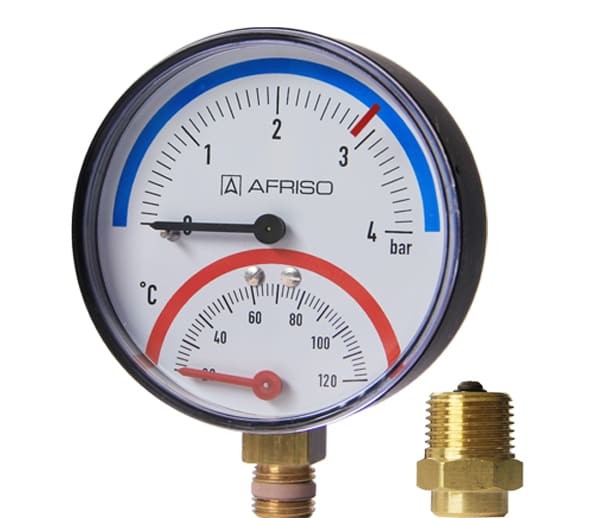
Vermeiden von Über- und Unterdruck
Zu starkes Pressen kann zu verschiedenen Problemen führen, z. B. zum Überschreiten der Bruchfestigkeit des Presslings, was zu Rissen oder zum Ablösen des oberen Teils des Pellets vom Rest führt. Sehr hohe Kräfte führen nicht unbedingt zu besseren Pellets und können mehr Schaden als Nutzen anrichten. Andererseits können bei zu geringem Druck Hohlräume im Pellet zurückbleiben, was zu uneinheitlichen Ergebnissen und geringerer Intensität bei leichteren Elementen führt.
Techniken für eine optimale Druckanwendung
-
Langsamer Druckabbau: Lassen Sie den Druck nach dem Aufbringen des erforderlichen Drucks langsam ab, um Risse in der Pelletoberfläche zu vermeiden. Eine schnelle Druckentlastung kann zu Spannungsbrüchen führen und die Integrität des Pellets beeinträchtigen.
-
Ausrichten und Laden der Matrize: Stellen Sie sicher, dass Presse und Matrize richtig ausgerichtet sind, um einen gleichmäßigen Druck auszuüben. Eine Überfüllung der Matrizenhülse mit Pulver kann zu einer ungleichmäßigen Verdichtung führen und sollte vermieden werden. Belasten Sie die Matrize mit nicht mehr als 50 % der Streckgrenze des Stahls, um zu verhindern, dass ihre Kapazität überschritten wird.
-
Pellet-Abmessungen: Achten Sie auf ein ausgewogenes Verhältnis zwischen Höhe und Durchmesser des Granulats. Pellets, die deutlich länger als ihr Durchmesser sind, können in der Nähe des oberen Stempels größeren Spannungen ausgesetzt sein, was zu Rissen führen kann. Wenn Sie längere Pellets pressen, sollten Sie geringere Kräfte einsetzen, die Matrize schmieren und einen O-Ring zwischen Grundplatte und Hülse verwenden, um die Spannungen gleichmäßiger zu verteilen.
-
Gleichmäßige Verteilung des Pulvers: Achten Sie beim Einbringen der Probenmischung in die Matrize darauf, dass sie gleichmäßig verteilt wird. Eine ungleichmäßige Verteilung kann zu einer ungleichmäßigen Verdichtung und zu Hohlräumen im Pellet führen.
Praktische Schritte für die Druckanwendung
- Fixieren der Pelletpresse: Befestigen Sie die Matrize im Presshohlraum und stellen Sie sicher, dass sie richtig ausgerichtet ist.
- Überführen der Probe: Verwenden Sie einen Metallspatel, um die gemahlene Probenmischung gleichmäßig in der Matrize zu verteilen.
- Verteilen der Partikel: Setzen Sie die Bolzenpresse ein und drehen Sie sie, um die Partikel gleichmäßig zu verteilen.
- Sichern Sie den Matrizensatz: Setzen Sie die Matrize in die hydraulische Pelletpresse ein und befestigen Sie sie durch Drehen des Rades.
- Druck aufbringen: Schließen Sie das Ventil der hydraulischen Presse und ziehen Sie am Niveau, um Druck auszuüben, bis der Griff fest sitzt.
- Druck ablassen: Um die Matrize zu lösen, lassen Sie zuerst den Druck nach, bewegen dann das obere Rad der Presse nach oben und nehmen schließlich die Matrize heraus.
Durch sorgfältiges Abwägen von Kompression und Homogenität können Sie qualitativ hochwertige Pellets erzielen, die Ihren experimentellen Anforderungen entsprechen. Die richtige Druckanwendung in Kombination mit der Aufmerksamkeit für Details in jedem Schritt des Prozesses stellt sicher, dass Ihre Pellets dicht, hohlraumfrei und gleichmäßig in ihren Eigenschaften sind.
Verdünnungsverhältnis: Feinabstimmung für genaue Ergebnisse
Das Verdünnungsverhältnis spielt bei der Röntgenfluoreszenzanalyse (RFA) eine entscheidende Rolle und beeinflusst die Genauigkeit und Zuverlässigkeit der Ergebnisse. Die korrekte Bestimmung und Anwendung des richtigen Verdünnungsverhältnisses ist wichtig, um häufige Probleme im Zusammenhang mit der Probenvorbereitung und Matrixeffekten zu mindern und sicherzustellen, dass die Elementzusammensetzung der Probe genau wiedergegeben wird.
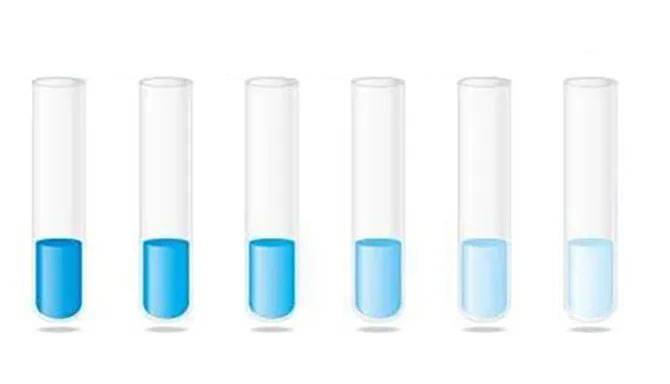
Einfluss des Verdünnungsverhältnisses auf die XRF-Analyse
Bei der RFA-Analyse wirkt sich das Verdünnungsverhältnis direkt auf die Intensität der von der Probe emittierten Röntgenlinien aus. Ein gut gewähltes Verdünnungsverhältnis kann die Matrixeffekte wie Absorption und Anreicherung ausgleichen, die die gemessenen Intensitäten verzerren können. Absorption tritt auf, wenn die Elemente in der Probe die von anderen Elementen emittierten Röntgenstrahlen absorbieren, wodurch die Intensität der Röntgenstrahlen, die den Detektor erreichen, verringert wird. Bei der Anreicherung hingegen werden die Atome des analysierten Elements durch die Anwesenheit hochenergetischer Elemente in der Probe angeregt, wodurch die Intensität der Röntgenlinien erhöht wird.
Durch sorgfältige Auswahl des Verdünnungsverhältnisses können diese Matrixeffekte minimiert werden, was zu genaueren und reproduzierbaren Ergebnissen führt. Ein geeignetes Verdünnungsverhältnis stellt sicher, dass die Probe weder zu konzentriert ist, was zu übermäßiger Absorption führen kann, noch zu verdünnt, was zu schwachen Signalintensitäten führen kann, die schwer genau zu messen sind.
Bestimmung des angemessenen Verdünnungsverhältnisses
Die Bestimmung des geeigneten Verdünnungsverhältnisses ist eine Kombination aus theoretischen Überlegungen und praktischen Experimenten. Ziel ist es, ein homogenes Gemisch zu erhalten, bei dem die Probe gleichmäßig im Matrixmaterial verteilt ist. Hier sind einige wichtige Schritte zu beachten:
-
Verstehen Sie die Zusammensetzung der Probe: Beginnen Sie damit, die elementare Zusammensetzung Ihrer Probe genau zu verstehen. Dazu gehört die Kenntnis der Konzentrationen der vorhandenen Haupt-, Neben- und Spurenelemente. Diese Informationen sind entscheidend für die Vorhersage möglicher Matrixeffekte.
-
Wählen Sie ein geeignetes Matrixmaterial: Das Matrixmaterial sollte chemisch inert sein und eine Zusammensetzung aufweisen, die Absorptions- und Anreicherungseffekte minimiert. Eine gängige Wahl sind Lithiumtetraborat (LiBO₂) und Borsäure (H₃BO₃), die dafür bekannt sind, dass sie stabile, homogene Mischungen mit einem breiten Spektrum von Probentypen bilden können.
-
Vorläufige Verdünnungen durchführen: Beginnen Sie mit einer Reihe von Verdünnungsverhältnissen und messen Sie die daraus resultierenden Intensitäten. Verwenden Sie diese Messungen, um die Auswirkungen der verschiedenen Verhältnisse auf die Intensität der Röntgenlinien zu beurteilen. Suchen Sie nach einem Verhältnis, bei dem die Intensitäten stabil sind und bei dem die Matrixeffekte minimiert sind.
-
Optimieren Sie für Homogenität: Stellen Sie sicher, dass die Probe mit einer Korngröße von weniger als 75 µm fein gemahlen ist. Dies ist wichtig, um ein homogenes Gemisch zu erhalten, was für eine genaue RFA-Analyse entscheidend ist. Je feiner die Körner sind, desto besser ist die Mischung und desto geringer ist die Wahrscheinlichkeit von Hohlräumen und ungleichmäßigen Oberflächen im fertigen Pellet.
-
Bewertung von Stabilität und Reproduzierbarkeit: Sobald ein geeignetes Verdünnungsverhältnis ermittelt wurde, führen Sie mehrere Messungen durch, um Stabilität und Reproduzierbarkeit sicherzustellen. Schwankungen in den Ergebnissen können auf Probleme bei der Probenvorbereitung hinweisen, z. B. unvollständiges Mischen oder Schwankungen in der Korngröße.
Häufige Probleme im Zusammenhang mit unsachgemäßer Verdünnung
Eine unsachgemäße Verdünnung kann zu mehreren häufigen Problemen bei der RFA-Analyse führen:
-
Übermäßige Absorption: Überkonzentrierte Proben können zu einer übermäßigen Absorption führen, bei der die von der Probe emittierten Röntgenstrahlen von anderen Elementen in der Probe stark absorbiert werden. Dies kann dazu führen, dass die Konzentrationen bestimmter Elemente unterschätzt werden.
-
Schwache Signalintensitäten: Umgekehrt können unterkonzentrierte Proben zu schwachen Signalintensitäten führen, die genaue Messungen erschweren. Dies ist besonders problematisch bei Spurenelementen, die möglicherweise kein ausreichend starkes Signal erzeugen, um zuverlässig nachgewiesen zu werden.
-
Matrix-Effekte: Eine unsachgemäße Verdünnung kann Matrixeffekte wie Absorption und Anreicherung noch verstärken. Diese Effekte können die gemessenen Intensitäten verzerren, was zu ungenauen Ergebnissen führt.
-
Inhomogene Mischungen: Wenn die Probe nicht fein gemahlen oder das Verdünnungsverhältnis nicht optimiert ist, kann die resultierende Mischung inhomogen sein. Dies kann zu Schwankungen in den gemessenen Intensitäten führen, selbst innerhalb derselben Probe, was die Zuverlässigkeit der Ergebnisse beeinträchtigt.
Schlussfolgerung
Die Feinabstimmung des Verdünnungsverhältnisses ist ein entscheidender Schritt, um genaue und zuverlässige RFA-Analyseergebnisse zu erzielen. Durch die sorgfältige Auswahl des richtigen Verdünnungsverhältnisses und die Sicherstellung einer homogenen Mischung können Sie Matrixeffekte und andere übliche Probleme im Zusammenhang mit der Probenvorbereitung minimieren. Dieser Ansatz verbessert nicht nur die Genauigkeit Ihrer Messungen, sondern auch die Reproduzierbarkeit Ihrer Ergebnisse, was den Vergleich von Daten zwischen verschiedenen Proben und Experimenten erleichtert.
Kreuzkontamination von Probe zu Probe: Verhindern von Interferenzen
Kreuzkontaminationen zwischen Proben sind ein kritisches Problem in analytischen Labors, das zu ungenauen Ergebnissen und einer Beeinträchtigung der Datenintegrität führen kann. Dieser Abschnitt befasst sich mit den Methoden zur Minimierung von Kreuzkontaminationen, der Bedeutung von Reinigungsprotokollen und bewährten Verfahren zur Gewährleistung der Probenreinheit.
Verständnis der Kreuzkontamination
Eine Kreuzkontamination liegt vor, wenn Rückstände aus einer Probe die Analyse einer anderen beeinträchtigen und so zu verzerrten Ergebnissen führen. Dies ist besonders problematisch in Umgebungen, in denen ein breites Spektrum von Probentypen analysiert wird, da das Kontaminationsrisiko mit der Vielfalt der Proben steigt. Wird zum Beispiel ein Probenvorbereitungsgerät wie ein Pulverisierer zwischen den Einsätzen nicht gründlich gereinigt, können Elemente von einer Probe in die nächste gelangen und die Analyse verfälschen.

Methoden zur Minimierung von Kreuzkontaminationen
-
Verwendung spezieller Geräte: Eine wirksame Methode zur Minimierung von Kreuzkontaminationen ist die Verwendung spezieller Geräte für bestimmte Probentypen. Auf diese Weise wird sichergestellt, dass Rückstände einer Probenart nicht mit einer anderen interferieren. So kann beispielsweise ein spezieller Pulverisierer für Metallproben das Einbringen von Metallelementen in nichtmetallische Proben verhindern.
-
Gründliche Reinigungsprotokolle: Die Umsetzung strenger Reinigungsprotokolle ist von wesentlicher Bedeutung. Nach jedem Gebrauch sollten die Geräte nach einem standardisierten Verfahren gereinigt werden. Dazu gehört die Verwendung geeigneter Lösungs- oder Reinigungsmittel und die Sicherstellung, dass alle Rückstände entfernt werden. So sollten beispielsweise Mahlgefäße aus Stahl mit Lösungsmitteln gereinigt werden, die Eisen-, Nickel- und Chromrückstände auflösen können.
-
Techniken der Probenvorbereitung: Auch die für die Probenvorbereitung verwendete Technik kann das Risiko einer Kreuzkontamination beeinflussen. Bei der Vorbereitung von Kalibrierungsstandards für die RFA-Analyse ist es beispielsweise wichtig, dass die Matrix der Kalibrierungsstandards mit der der Proben übereinstimmt. Dies trägt dazu bei, die Genauigkeit zu verbessern und das Kontaminationsrisiko zu verringern. Darüber hinaus kann die Verwendung hochwertiger Kalibrierungsrohlinge mit einem Analysenzertifikat Vertrauen in die Integrität des Kalibrierungsprozesses schaffen.
-
Verwendung von Probenhaltern: Bei kleineren und dünneren Proben kann die Verwendung eines Probenhalters Störungen durch Objekte hinter der Probe verhindern. Dies gewährleistet eine genauere Analyse, da ein gleichmäßiger Abstand zwischen der Probe und dem Detektionsfenster des Spektrometers eingehalten wird.
-
Messungen von mehreren Oberflächen: Bei der Untersuchung großer Metallproben ist es ratsam, mehrere Oberflächen mehrfach zu messen, um genauere Ergebnisse zu erhalten. Dadurch verringert sich die Wahrscheinlichkeit, dass die Daten aufgrund einer lokalen Verunreinigung auf einer einzelnen Oberfläche verzerrt sind.
Die Bedeutung von Reinigungsprotokollen
Reinigungsprotokolle sind das Rückgrat der Vermeidung von Kreuzkontaminationen. Sie stellen sicher, dass die Geräte frei von Rückständen sind, die die nachfolgenden Analysen beeinträchtigen könnten. Regelmäßige Wartung und die Einhaltung von Standardarbeitsanweisungen (SOPs) für das An- und Abschalten sind von entscheidender Bedeutung. So können beispielsweise häufige Überprüfungen der Instrumente, um sicherzustellen, dass sie wie erwartet funktionieren, Probleme verhindern, die zu einer Kontamination führen könnten.
Bewährte Praktiken für die Probenvorbereitung
Zu den wichtigsten Zielen der Probenvorbereitung gehören die Sicherstellung der Probenhomogenität und die Beherrschung potenzieller Interferenzen mit der ursprünglichen Form der Probe. Techniken, die Vorteile in Bezug auf die Geschwindigkeit und die Anzahl der Proben bieten, die auf einmal vorbereitet werden können, sind besonders wertvoll in Labors mit hohem Durchsatz. Es ist jedoch wichtig, ein Gleichgewicht zwischen Geschwindigkeit und der Notwendigkeit von Genauigkeit und Integrität herzustellen.
Schlussfolgerung
Die Vermeidung von Kreuzkontaminationen zwischen den Proben ist entscheidend für die Genauigkeit und Zuverlässigkeit der Analyseergebnisse. Durch den Einsatz spezieller Geräte, strenger Reinigungsprotokolle und bewährter Praktiken bei der Probenvorbereitung können Labors das Kontaminationsrisiko erheblich verringern. Dies gewährleistet nicht nur die Integrität der einzelnen Analysen, sondern trägt auch zur allgemeinen Glaubwürdigkeit der Labordaten bei.
Bewährte Praktiken zur Fehlerreduzierung bei der Vorbereitung von XRF-Pellets
Bei der Röntgenfluoreszenzanalyse (RFA) hängt die Qualität der Ergebnisse stark von der Vorbereitung der Proben ab. Die Herstellung gepresster Pellets für die RFA-Analyse ist ein kritischer Schritt, der die Genauigkeit und Zuverlässigkeit der Daten erheblich beeinflussen kann. Um Fehler zu minimieren und konsistente Ergebnisse zu gewährleisten, ist es unerlässlich, bei der Vorbereitung von RFA-Pellets die besten Verfahren anzuwenden. In diesem Abschnitt werden die wichtigsten Strategien für die Methodenentwicklung, die Beachtung von Details und die Konsistenz zur Reduzierung von Fehlern bei der RFA-Probenvorbereitung beschrieben.

Methodenentwicklung
Der erste Schritt zur Verringerung von Fehlern bei der Vorbereitung von RFA-Pellets ist die Entwicklung einer robusten Methode. Dazu ist es erforderlich, die spezifischen Anforderungen der zu analysierenden Probe zu verstehen und den Präparationsprozess entsprechend anzupassen. Die Bandbreite der für die RFA-Analyse in Frage kommenden Probentypen ist groß, und jede Probe kann einzigartige Merkmale aufweisen, die eine Anpassung der Präparationsmethode erforderlich machen. So sind beispielsweise die Partikelgröße der Probe, die Wahl des Bindemittels und das Verdünnungsverhältnis entscheidende Faktoren, die sorgfältig berücksichtigt werden müssen.
-
Partikelgröße: Die Partikelgröße der Probe kann die Homogenität des Pellets und folglich die Genauigkeit der RFA-Analyse erheblich beeinflussen. Im Allgemeinen wird empfohlen, eine Partikelgröße von weniger als 100 Mikrometern zu verwenden, um eine gleichmäßige Verteilung der Probe im Pellet zu gewährleisten. Größere Partikel können zu Heterogenität und damit zu uneinheitlichen Messwerten führen.
-
Wahl des Bindemittels: Das bei der Pelletaufbereitung verwendete Bindemittel spielt eine entscheidende Rolle bei der Gewährleistung der Integrität und Stabilität des Pellets. Zu den üblichen Bindemitteln gehören Boratgläser, Zellulose und Wachse. Die Wahl des Bindemittels sollte auf der Kompatibilität mit der Probe und den spezifischen Anforderungen der XRF-Analyse basieren. Einige Bindemittel können beispielsweise Elemente einbringen, die die Analyse stören können. Daher ist es wichtig, ein Bindemittel zu wählen, das solche Störungen minimiert.
-
Verdünnungsverhältnis: Das Verdünnungsverhältnis bezieht sich auf das Verhältnis zwischen der Probe und dem Bindemittel. Ein angemessenes Verdünnungsverhältnis stellt sicher, dass die Probe gleichmäßig im Pellet verteilt ist, wodurch das Risiko einer Über- oder Unterrepräsentation bestimmter Elemente verringert wird. Das optimale Verdünnungsverhältnis hängt von der Zusammensetzung der Probe und den analytischen Anforderungen ab. Oft ist es notwendig, eine Reihe von Tests durchzuführen, um das beste Verdünnungsverhältnis für eine bestimmte Probe zu ermitteln.
Liebe zum Detail
Bei der Vorbereitung der XRF-Pellets ist es wichtig, auf Details zu achten, um Fehler zu minimieren. Kleine Abweichungen im Vorbereitungsprozess können zu erheblichen Diskrepanzen in den Analyseergebnissen führen. Daher ist es von entscheidender Bedeutung, dass bei jedem Schritt des Vorbereitungsprozesses Konsistenz gewahrt wird.
-
Druck Anwendung: Die Höhe des Drucks, der während des Pressvorgangs auf das Pellet ausgeübt wird, ist ein entscheidender Faktor, der die Dichte und Homogenität des Pellets beeinflusst. Ein zu geringer Druck kann zu einem lockeren Pellet führen, während ein zu hoher Druck dazu führen kann, dass die Probe ungleichmäßig komprimiert wird. Der optimale Druck sollte auf der Grundlage der Eigenschaften der Probe und der spezifischen Anforderungen der XRF-Analyse bestimmt werden. Ein gleichmäßiger Druck ist wichtig, um reproduzierbare Ergebnisse zu gewährleisten.
-
Dicke des Pellets: Die Dicke des fertigen Pellets kann die Empfindlichkeit und Genauigkeit der RFA-Analyse beeinflussen. Ein zu dünnes Pellet liefert möglicherweise kein ausreichendes Signal, während ein zu dickes Pellet zu Absorptionseffekten führen kann, die die Ergebnisse verfälschen. Die ideale Dicke liegt in der Regel zwischen 1 und 3 Millimetern, abhängig von der Zusammensetzung der Probe und den analytischen Anforderungen.
-
Kreuzkontamination von Probe zu Probe: Kreuzkontaminationen zwischen Proben sind eine häufige Fehlerquelle bei der RFA-Analyse. Um dieses Risiko zu minimieren, ist es wichtig, alle Geräte und Oberflächen zwischen den Probenvorbereitungen gründlich zu reinigen. Dies gilt auch für die Pelletpresse, die Probenbehälter und alle anderen während des Prozesses verwendeten Werkzeuge. Darüber hinaus kann die Verwendung spezieller Werkzeuge für jede Probe das Risiko einer Kreuzkontamination weiter verringern.
Konsistenz
Konsistenz im Vorbereitungsprozess ist der Schlüssel zur Reduzierung von Fehlern bei der RFA-Analyse. Dazu gehört die Festlegung von Standardarbeitsanweisungen (SOPs) und die Durchführung regelmäßiger Qualitätskontrollen (QC) und Qualitätssicherungsprüfungen (QA).
-
Standardarbeitsanweisungen (SOPs): Die Entwicklung und Einhaltung von Standardarbeitsanweisungen stellt sicher, dass jeder Schritt des Aufbereitungsprozesses einheitlich durchgeführt wird. SOPs sollten detaillierte Anweisungen für die Probenvorbereitung enthalten, einschließlich der Partikelgröße, der Wahl des Bindemittels, des Verdünnungsverhältnisses, der Druckanwendung und der Pelletstärke. Regelmäßige Schulungen und die Dokumentation des Aufbereitungsprozesses können dazu beitragen, dass alle Mitarbeiter die SOPs konsequent befolgen.
-
Qualitätskontrolle (QC) und Qualitätssicherung (QA): QC- und QA-Verfahren sind unerlässlich, um die Genauigkeit und Zuverlässigkeit der RFA-Analyse zu überwachen. Dazu gehört die Verwendung von zertifizierten Referenzmaterialien (CRMs), Leerproben, Duplikaten und Replikaten zur Überprüfung der Genauigkeit der Ergebnisse. Regelmäßige QC-Kontrollen können dazu beitragen, Abweichungen von den erwarteten Ergebnissen festzustellen und rechtzeitige Anpassungen des Präparationsprozesses zu ermöglichen.
-
Matrixabgleich: Beim Matrixabgleich werden Proben mit einer ähnlichen Zusammensetzung wie die unbekannten Proben vorbereitet, um Matrixeffekte zu minimieren. Dies kann dazu beitragen, Fehler zu reduzieren, die durch Unterschiede in der Zusammensetzung der Probe, wie Absorptions- oder Anreicherungseffekte, verursacht werden. Der Matrixabgleich ist besonders wichtig, wenn komplexe Proben mit unterschiedlichen Zusammensetzungen analysiert werden.
Schlussfolgerung
Zusammenfassend lässt sich sagen, dass die Verringerung von Fehlern bei der XRF-Pelletvorbereitung eine Kombination aus Methodenentwicklung, Detailgenauigkeit und Konsistenz erfordert. Durch die sorgfältige Berücksichtigung von Faktoren wie Partikelgröße, Wahl des Bindemittels, Verdünnungsverhältnis, Druckanwendung und Pelletdicke sowie durch die Festlegung von SOPs und die Durchführung regelmäßiger QC- und QA-Kontrollen ist es möglich, Fehler zu minimieren und genaue und zuverlässige RFA-Analyseergebnisse zu gewährleisten. Der Schlüssel zu einer erfolgreichen RFA-Analyse liegt in der sorgfältigen Vorbereitung der Proben, da selbst kleine Abweichungen zu erheblichen Abweichungen bei den Endergebnissen führen können.
Schlussfolgerung: Präzision in der XRF-Analyse erreichen
Die Beherrschung der PELLET PRESS XRF PROBENVORBEREITUNG ist entscheidend für genaue Ergebnisse. Durch die Behebung allgemeiner Probleme wie Partikelgröße, Verunreinigung, Wahl des Bindemittels, Pelletdicke, Druckanwendung, Verdünnungsverhältnis und Kreuzkontamination können Sie die Präzision Ihrer RFA-Analyse erheblich verbessern. Die Einhaltung von Best Practices und die sorgfältige Beachtung von Details gewährleisten, dass jeder Aspekt der Pelletvorbereitung optimiert wird, was letztlich zu zuverlässigen und konsistenten Analyseergebnissen führt. Wenn Sie Zeit in die Perfektionierung Ihrer Präparationsverfahren investieren, wird sich dies in Form von genaueren Daten und einem tieferen Verständnis Ihrer Proben auszahlen.
Ähnliche Produkte
- Automatische Labor-Hydraulikpresse für XRF & KBR-Pressen
- XRF & KBR Kunststoffring Labor Pulverpressform für FTIR
- XRF & KBR Stahlring Labor Pulver Pellet Pressform für FTIR
- XRF Borsäure Labor Pulver Pellet Pressform für Laborgebrauch
- Laborhydraulische Pelletpresse für XRF KBR FTIR Laboranwendungen
